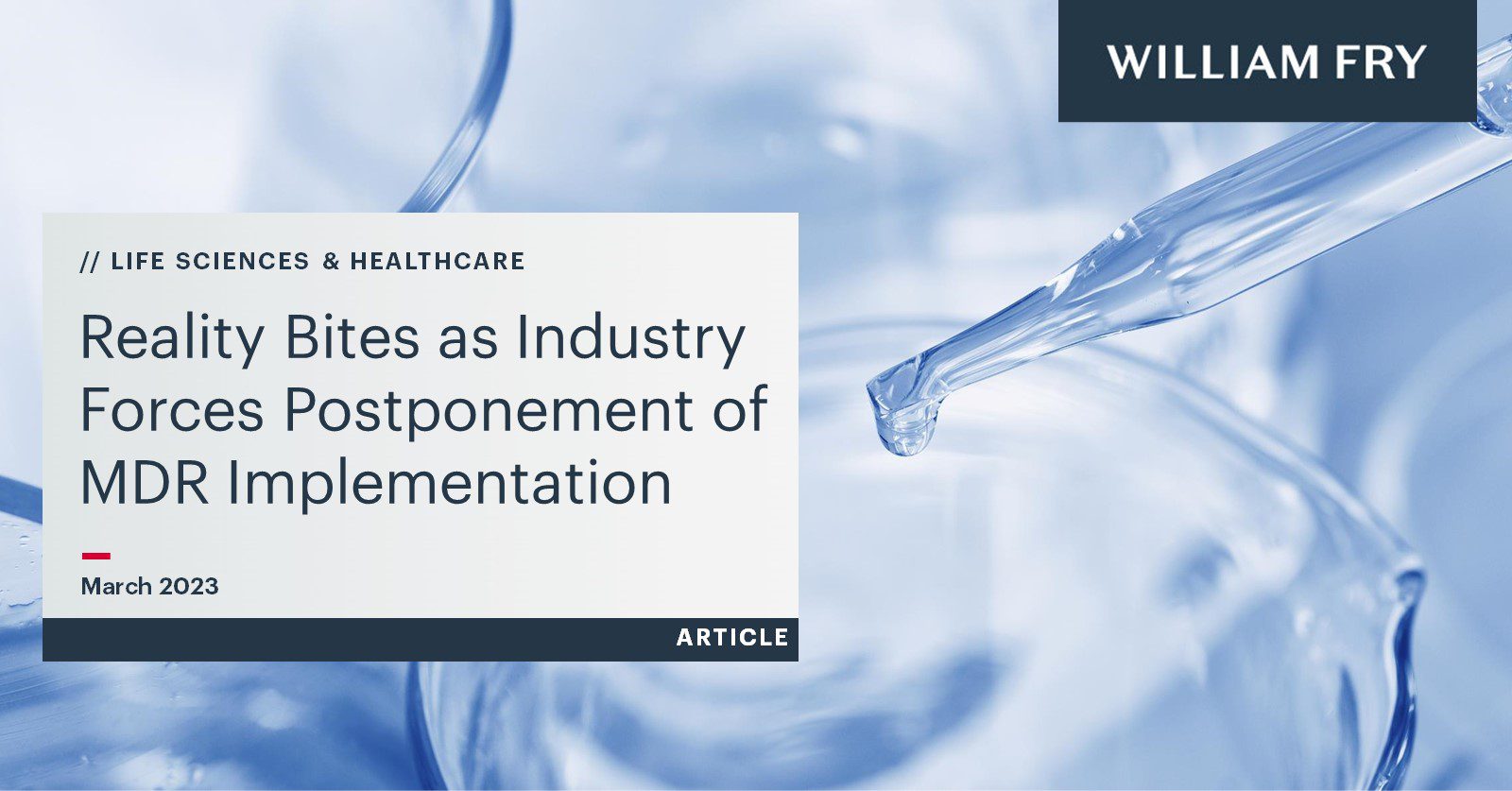The Need for Extension
To avoid supply shortages of life saving medical devices, on 16 February 2023, the European Parliament voted almost unanimously to extend the Medical Device Regulation (MDR) transition periods, thus adopting the proposals put forward by the European Commission on 6 January 2023. Depending on the device classification, companies now have until 31 December 2027 or 2028 to ensure their products are MDR compliant.
The European Parliament also voted to remove the sell-off date provision for existing products specified in the MDR and the In Vitro Diagnostic Medical Devices Regulation (IVDR).
The extension to the transition period is in response to the issue that the overall capacity of notified bodies needs to be improved to carry out the tasks required of them, despite considerable progress over the past few years. This, coupled with the fact that many manufacturers were not sufficiently prepared to meet the strengthened requirements of the MDR by the end of the original transition period, i.e., 26 May 2024, meant the availability of medical devices on the EU market was under threat.
The extended transition period only applies to ‘legacy devices’, i.e., those covered by CE certificate or a declaration of conformity issued before 26 May 2021. The timelines for the extension of the transition period are as follows:
- Higher risk devices (class III and class IIb implantable devices, except certain devices for which the MDR provides exemptions, given that these devices are considered to be based on well-established technologies) – 31 December 2027;
- Medium and lower risk devices (other class IIb devices and class IIa, class Im, Is and Ir devices) – 31 December 2028;
- Class III custom-made implantable devices, which are currently not covered by Article 120(3) MDR, where the manufacturer has lodged an application before 26 May 2024, resulting in the signing of a contract with the notified body before 26 September 2024 – 26 May 2026.
The application of the extended transition period is subject to several cumulative conditions, in particular:
- The devices must continue to comply with Directive 90/385/EEC or Directive 93/42/EEC, as applicable;
- The devices do not undergo significant changes in the design and intended purpose;
- The devices do not present an unacceptable risk to the health or safety of patients, users or other persons, or to other aspects of the protection of public health. Where, as part of their market surveillance activities, a competent authority finds that a device presents such an unacceptable risk to health and safety, the transition period ceases for that device;
- No later than 26 May 2024, the manufacturer has put in place a quality management system in compliance with the MDR;
- No later than 26 May 2024, the manufacturer, or its authorised representative, has lodged a formal application under the MDR for conformity assessment in respect of a “legacy device” covered by a Directive’s certificate or declaration of conformity, or in respect of a device intended to substitute that device under the MDR. The notified body and manufacturer must have also signed a written agreement by 26 September 2024.
Industry Analysis
A MedTech Europe Survey published in July 2022 found MDR certificates had yet to be issued for more than 85% of over 500,000 devices previously certified under MDD or AIMDD. The survey also found that the time-to-certification with notified bodies takes 13-18 months on average, which is double what it was historically. As such, it is no surprise that the transition period has been extended.
Although the number of notified bodies continues to increase and existing bodies are improving their capacity, there is concern that the extension may cause a slower rate of compliance with the suggestion that it signals the pressure of implementation has been lifted.
Ultimately, the extension is not intended to buy industry time. Instead, it aims to provide notified bodies the time to process the significant number of applications it has received while avoiding supply shortages of life-saving medical devices in the EU.
NSAI joins the IVDR club
The National Standards Authority of Ireland (NSAI) is the most recent addition to the list of EU bodies that are able to provide conformity assessments for manufacturers of IVDs. There are ten EU Notified bodies currently designated under the IVDR 2017/746. This means that Irish manufacturers can now more easily apply to the NSAI to certify their product. NSAI will perform conformity assessment activities under IVDR 2017/746, Annex IX Chapter I and Chapter II.
The designation greatly expands the scope of conformity assessment provided under the old IVDD. In line with this expansion, NSAI is designated to perform conformity assessment activities for all Classifications of devices: Class A, Class B, Class C and Class D.
For more information on the IVDR, please access our previous article here.
Contact Us
If you wish to discuss the topics discussed in this article, please contact any member of the Healthcare or Life Sciences team or your usual William Fry contact.
Contributed by Hannah Garvey, Grainne Carr & Anna Lee Dowling



